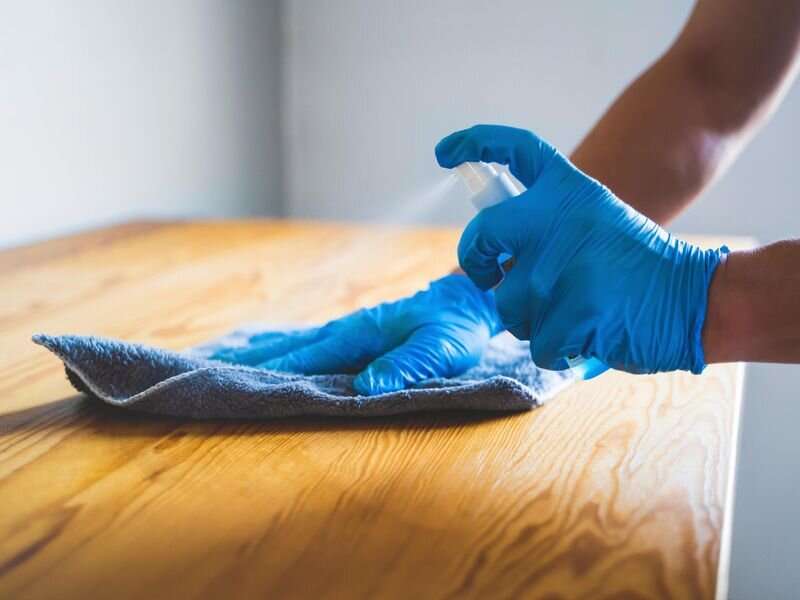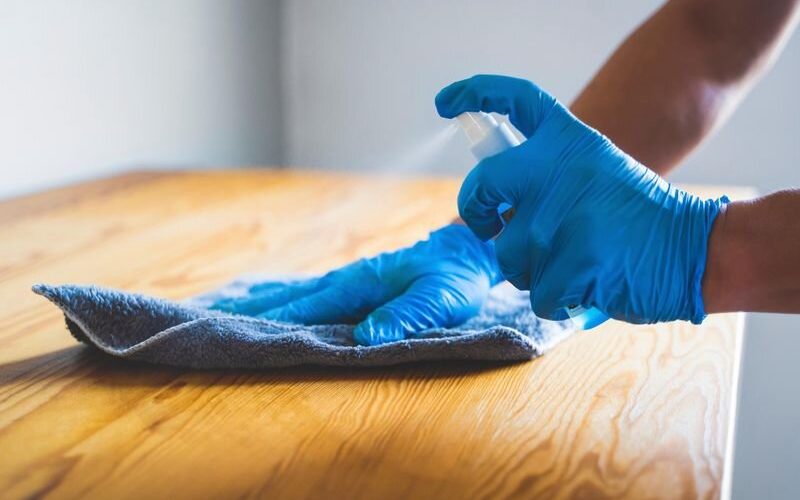COVID transmission 1,000 times more likely from air vs. surfaces, says study

If you’re still wiping down groceries, doorknobs and light switches in an attempt to thwart COVID-19, maybe you can relax a little: You’re 1,000 times more likely to get COVID from the air you breathe than from surfaces you touch, a new study suggests.
University of Michigan researchers tested air and surface samples around their campus and found odds are greater for inhaling virus particles than picking them up on your fingers.
“In this study, we set out to better understand potential exposures to the SARS-CoV-2 coronavirus—the virus which causes COVID-19—in several college campus settings,” explained study author Richard Neitzel, a professor of environmental health sciences and global public health.
The settings included offices, classrooms, performance spaces, cafeterias, buses and a gym. However, the samples were taken during the pandemic lockdown, so these were relatively empty spaces.
“We also used information on campus COVID-19 infections to estimate the probability of infection associated with our environmental measurements,” added Neitzel.
“The overall risk of exposure to the virus was low at all of the locations we measured,” he said.
However, “Our results suggest that there was a much higher risk of infection from inhalation than from contact with surfaces like door handles, drinking fountains, keyboards, desks, sinks and light switches,” he noted.
To get a handle on relative risk, between August 2020 and April 2021, Neitzel and his colleagues used air pumps and swabs in various locales across the locked-down campus.
In all, more than 250 air samples were gathered, of which 1.6% tested positive for the virus that causes COVID. Of over 500 surface samples, 1.4% were positive.
The most risky setting was the gym, with positive indications found for 75% of air samples and 50% of all surface samples. Most of the contaminated gym surfaces involved drinking fountain buttons; no samples taken from gym equipment turned up positive.
Overall, far fewer positive readings were found in office spaces or around computer keyboards, light switches, tabletops, microwaves, fridge handles or student desks.
But after stacking up positive samples against actual COVID cases on campus, the team determined that the probability of getting COVID after exposure to airborne virus particles was roughly 1 per 100 exposures.
The researchers determined the probability of illness from a contaminated surface to be 1 for every 100,000 exposures.
Still, Neitzel stressed that the findings reflect a time and place in which strict surface cleaning protocols were enforced, and when crowds were nonexistent. “Our results,” he cautioned, “may not be completely representative of other community settings.”
Nevertheless, the results suggest people should be more concerned about inhalation risks from the coronavirus than the risks from touching surfaces, “at least in an environment where surfaces are cleaned regularly, as was the case with our campus,” Neitzel added.
Elizabeth Scott, a professor emerita at Simmons University in Boston, said, “There has been a growing recognition that COVID-19 is predominantly airborne.”
Yet Scott, who was not part of the study team, cautioned that “the relative importance of surface transmission may be higher in homes, dorms [or] where people are living together and repeatedly touching the same surfaces.”
That kind of private space risk, she stressed, was not evaluated by the study. Also, it’s important to note that “other respiratory viruses and other bacterial infections are spread predominantly via contact surfaces,” added Scott, former co-director of the Simmons Center for Hygiene and Health in Home and Community.
In her view, “we need to continue effective and holistic hygiene practices for hands and surfaces, as well as respiratory and air hygiene, to protect against all the other community-borne infections that were an issue before COVID-19, and will be with us for the future,” Scott said.
Source: Read Full Article
